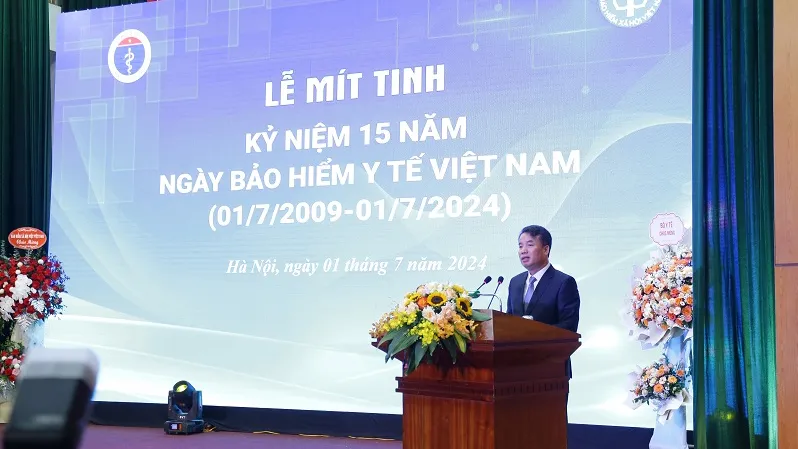
Vietnam’s health coverage improves with 93.35% participation
Last year saw over 174 million healthcare visits covered by the insurance fund.
Vietnam’s health insurance coverage and healthcare system has significantly improved, claimed Nguyen The Manh, director general of Viet Nam Social Security (VSS), in his speech at the Viet Nam Health Insurance Day.
After 15 years of implementing the Law on Health Insurance, the country saw its health insurance participation rate at 93.35%, about 93.6 million Vietnamese individuals. In comparison, 2008 saw 39.7 million health insurance participants, covering 46.1% of the population.
Despite the COVID-19 pandemic, health insurance coverage has consistently increased, particularly benefiting low-income individuals, those living in poverty, and vulnerable social groups.
Currently, nearly 13,000 healthcare facilities nationwide provide essential medical services to those covered by the health insurance fund. The system includes public and private facilities, ensuring convenient access to healthcare.
Grassroots-level facilities account for 95% of those providing health insurance-based services and handled 75% of healthcare visits between 2018 and 2023, accounting for 34% of health insurance fund expenditures.
In 2023, over 174 million healthcare visits were covered by the health insurance fund, almost double the number in 2009.
The fund, previously in deficit, is now balanced with a contingency surplus. Last year's expenditures reached $4.78b, an eightfold increase since 2009.
Over the past 15 years, the fund has disbursed nearly $38.9b for medical services.
The health insurance fund has expanded its coverage, including expensive medications and targeted cancer treatments, and reimbursed costs for costly medical devices like artificial hip joints and arterial stents.
Regulations have facilitated easier access to healthcare services for insurance participants, allowing them to visit any district-level hospital since 2016 and any provincial-level hospital since 2021.
Manh emphasised that these achievements result from the Party's and State's guidance, as well as collaboration among ministries and sectors.
He proposed future directions, including enhancing healthcare quality, expanding rights and coverage areas, and efficiently utilising the health insurance fund to concentrate resources on medical treatment for rare, chronic, and serious illnesses.
Manh also highlighted the importance of digital transformation in reforming administrative procedures to better serve citizens and businesses. The national insurance database, integrated with the national population database, has streamlined processes, improved service quality, and prevented fund misuse.
All 12,581 healthcare facilities now use ID cards for examinations and treatments, simplifying procedures and managing the health insurance fund more effectively.
Manh concluded by calling for continued guidance from the Party, National Assembly, and Government, as well as cooperation from all levels and sectors, to achieve universal health insurance goals and improve healthcare quality for all citizens.



















 Advertise
Advertise






